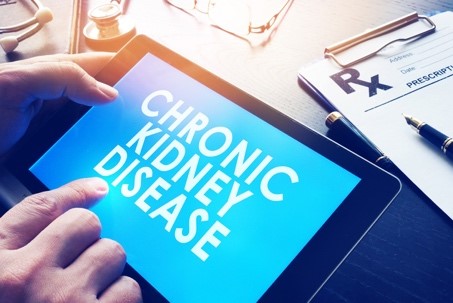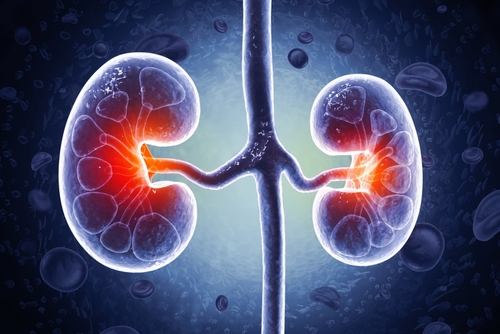
Trials among patients with chronic kidney disease (CKD) use glomerular filtration rate (GFR) slope as a validated surrogate end point. However, due in part to the inability to separate distinct contributions of the acute (before 3 months) and chronic (after 3 months) slopes for treatment effects on clinical end points, ambiguities may exist regarding the appropriate period for slope evaluation.
Tom Greene, PhD, and colleagues utilized data of 66 randomized treatment comparisons from previous CKD trials to estimate treatment effects on the acute and chronic GFR slopes and on the established clinical end point of kidney failure or serum creatinine doubling. To determine the independent contributions of the acute and chronic slopes, the researchers used a Bayesian meta-regression framework to relate treatment effects on the established clinical end point to both slopes.
The model suggested that treatment effects on both the acute and chronic slopes were independent predictors of the treatment effect on the established clinical end point, with a high median R2 of 0.95. For a fixed treatment effect on the chronic slope, each 1 mL/min/1.73 m2 greater acute GFR decline for the treatment versus control increased the hazard ratio (HR) for the established clinical end point by 11.4% against the treatment. The 3-year total slope was defined as the average slope extending from baseline to 3 years; the optimal weights for the acute and chronic slopes were consistent with the 3-year total slope.
“Treatment effects on both the acute and chronic GFR slopes are independent determinants of the effects on the established clinical end point, with variation in acute effects accounting for much of the observed variation in treatment effects on the clinical end point across previous trials,” the researchers said. “Our results establish that acute effects impact the clinical end point independently of treatment effects on the chronic slope and support the 3-year total slope as the primary slope-based outcome in randomized trials.”
Source: Greene T, et al. Clin J Am Soc Nephrol. 20(5):632-641, May 2025. doi:10.2215/CJN.0000000662






 © 2025 Mashup Media, LLC, a Formedics Property. All Rights Reserved.
© 2025 Mashup Media, LLC, a Formedics Property. All Rights Reserved.